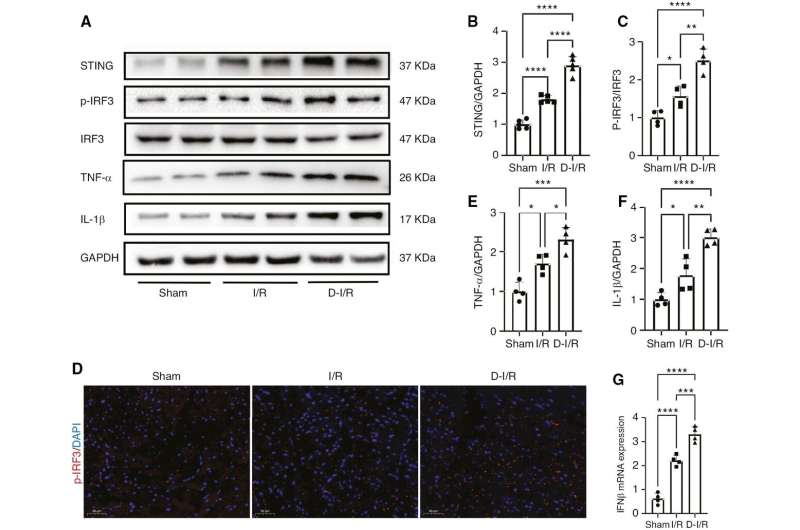This article has been reviewed according to Science X's editorial process and policies. Editors have highlighted the following attributes while ensuring the content's credibility:
fact-checked
proofread
Inhibition of stimulator of interferon genes protects against myocardial ischemia-reperfusion injury in diabetic mice

Although the past decade has witnessed substantial scientific progress with the advent of cardioprotective pharmacological agents, most have failed to protect against myocardial ischemia/reperfusion (I/R) injury in diabetic hearts. This article investigates the role of stimulator of interferon genes (STING) in I/R injury in diabetic mice and further exploring the underlying mechanisms.
Type 2 diabetic mice were subjected to I/R or sham operation to investigate the role of STING. STING knockout mice were subjected to 30 minutes of ischemia followed by reperfusion for 24 hours. Finally, myocardial injury, cardiac function, and inflammation levels were assessed.
STING pathway activation was observed in diabetic I/R hearts, as evidenced by increased p-TBK and p-IRF3 expression. STING knockout significantly decreased the ischemic area and improved cardiac function after I/R in diabetic mice. STING knockout also elicited cardio-protective effects by decreasing serum cardiac troponin T and lactate dehydrogenase levels, thus diminishing the inflammatory response in the heart after I/R in diabetic mice. In vitro, STING inhibition decreased the expression of hypoxia-re-oxygenation-induced inflammatory cytokines.
Targeting STING inhibits inflammation and prevents I/R injury in diabetic mice. Thus, STING may be a potential novel therapeutic target against myocardial I/R injury in diabetes.
The study is published in the journal Cardiovascular Innovations and Applications.
More information: Yuce Peng et al, Inhibition of Stimulator of Interferon Genes Protects Against Myocardial Ischemia-Reperfusion Injury in Diabetic Mice, Cardiovascular Innovations and Applications (2023). DOI: 10.15212/CVIA.2023.0020



















